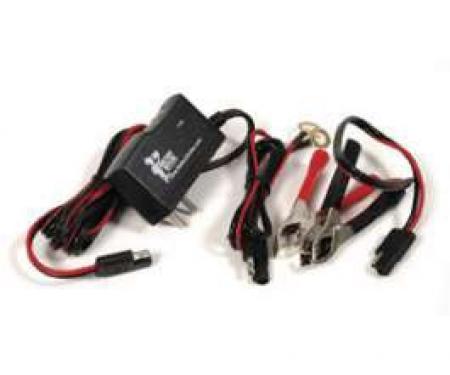You know winter has arrived when roads turn icy, snow buries a driveway and frigid temperatures keep a convertible top up. A potentially torturous time for any automobile, winter wreaks havoc on the life of a classic or collectable vehicle. Storage during this colder season is pleasing salvation for your prized machine. By following a series of steps and procedures your favoured set of wheels will be ready to roll come springtime.

1. Find a Suitable Storage Location
Although a dry and sheltered garage would be ideal, storing a vehicle outside is not completely out of the question in a pinch. Whether the vehicle is inside or outside, take care in selecting a secure location that is level surface.
When securing the car in place, it is best to avoid use of the parking brake since it can become stuck over time. Instead of using the parking brake, put blocks in at the corner of the vehicle’s wheels.
2. Wash and Wax the Vehicle's Exterior
Bringing out the beauty of your vehicle with a quality wash and wax also serves to benefit the longevity of a car’s finish. Using either an all-purpose car wash or ideally using a series of products formulated for specific surfaces, an attentive cleaning of body panels should include reaching areas removing dirt, mud, water stains and other types of debris.
After washing a car, it’s time to protect the finish by selecting a car wax. Whether choosing paste, spray or liquid wax, make sure to apply the product according to instructions for maximum protection.
3. Clean Out the Cabin
If you deeply care for your classic or collector car, it’s safe to assume you have made it a yearlong chore to keep the interior of your vehicle clean. With that being the case, the process of preparing the interior of your vehicle for winter storage should be easy. In addition to vacuuming the cabin, leather surfaces can be treated with a conditioner or rejuvenator product.
4. Perform an Oil Change
Periodic motor oil changes are regarded as an essential part of maintaining the smooth operations of a vehicle. Although winter storage will result in less engine activity over an extended period of time, an oil change is still a necessity.
5. Top Up Other Fluids
In addition to engine oil, check and/or top up engine coolant, brake fluid as well as windshield washer fluid ahead of a vehicle`s winter slumber in order to minimize corrosion within their respective systems.Also store your vehicle with a full tank of fuel but be aware that gasoline octane levels typically begin to drop after three months. Higher octane premium-grade gasoline or the use of a fuel stabilizer additive is recommended.
6. Maximize Tire Pressures
Air pressures in tires are very susceptible to variations in temperatures. For example, a tire inflated to 40 psi when the temperature is 20 degrees Celsius (68 degrees Fahrenheit) can fall by almost 4 psi at 0 degrees Celsius (32 degrees Fahrenheit). This fluctuation makes it imperative for tires to be inflated to maximum pressure levels for winter storage. Some have suggested slightly overinflating tires to prevent flat spotting but this is generally unnecessary with newer radial tires.
7. Safeguard the Battery and Electrical System
With antique and classic cars produced before the 1970s, simpler electrical systems can be done by disconnecting the battery by removing the negative cable first followed by the cable on the positive terminal. Highly recommended for storing newer vehicles and good planning for storing classic cars is a battery tender or trickle charger.
8. Protect Car with a Quality Cover
For preventing damage during a long storage period, a good car cover is a necessity. The best protection for a vehicle is achieved with a well-fitting cover that is multi-layered as well as breathable.
Additional Precautions
When preparing a classic or collector car for storage includes covering openings such as exhaust pipe openings to prevent the possibilities for rodents or other small living creatures to nest. Finally, make it a habit to routinely check on the stored vehicle. At least once a month, uncover the car and inspect it for any kind of damage. While some recommend it, starting the engine of a stored vehicle is not necessary.


